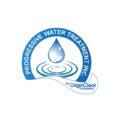Lift Stations
Lift stations contain pumps, valves, and electrical equipment necessary to pump water or wastewater from a low elevation to a high elevation. For example, a sewage lift station is used to pump sewage or wastewater up hill from a low-lying neighborhood to a collection system of pipes. Lift stations are also used in a variety of industrial settings, including mining and water management and treatment.
Wastewater systems typically use gravity to transport waste from homes and businesses to provide water treatment at a central facility. For cities that have many changes in elevation, municipalities must use lift stations to pump the wastewater to a higher elevation. Lift stations pump storm water and sewage from low-lying areas, such as the parishes surrounding the city of New Orleans. A pump lift station is used in conjunction with other mitigating structures and features, such as canals and levees to manage storm water. Lift stations are designed to handle a specific flow of water from rainfall, and many contain multiple pumps to manage a large drainage capacity, usually measured in cubic feet per second. A sewer lift station is frequently used by municipalities to control the sewage treatment across several areas or neighborhoods. A sewer lift station pumps the effluent to a collection area, ensuring that waste from lower elevation areas is processed.
Lift stations for wastewater or storm water applications work in a similar way. A wastewater lift station typically comprises a concrete well that is fitted with several submersible pumps. Lift station design also include incorporating level-sensing probes, valves and pressure sensors, and may also include a stand-by generator. Large storm water treatment facilities may have generator back-up for a pump station to ensure the proper drainage of water during a storm or power outage. Lift stations must function in harsh and corrosive environments and are typically made of precast concrete with the pumps and valves accessible through a hatch for cleaning and maintenance.





